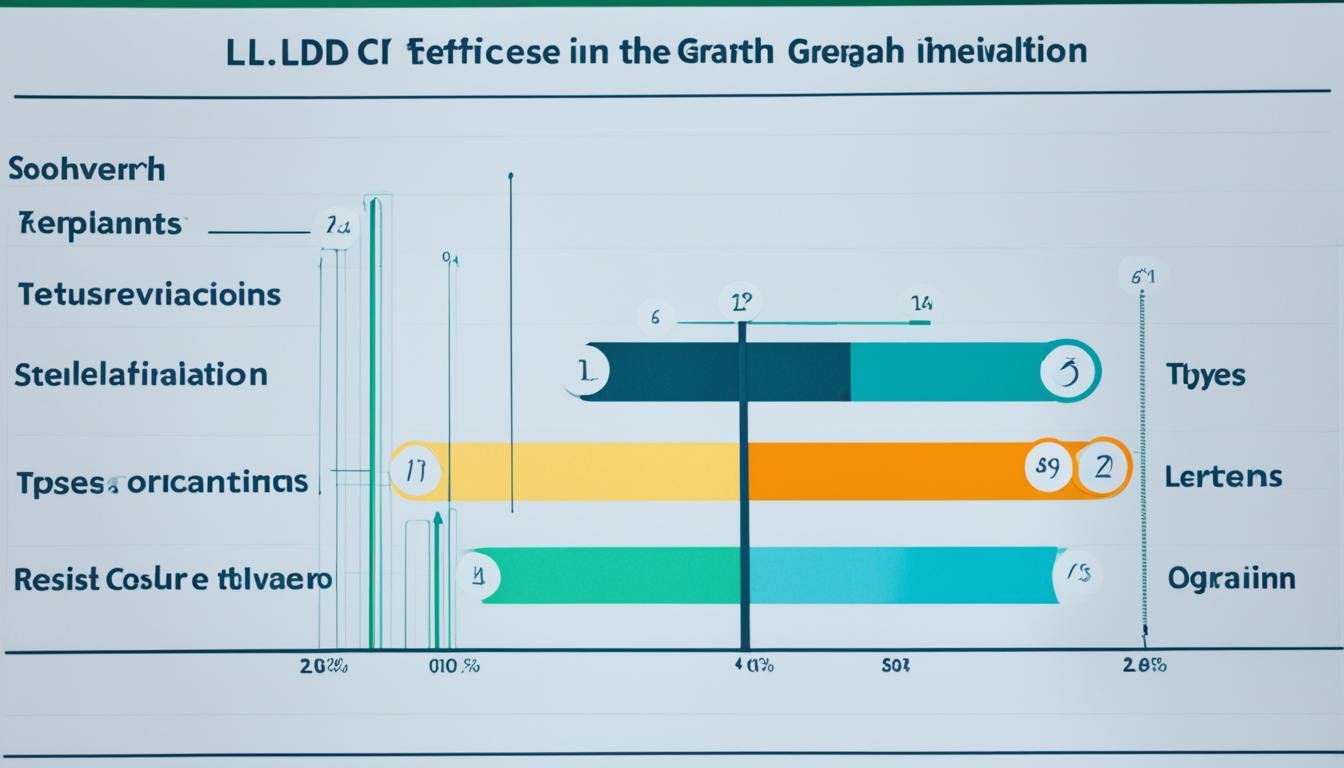Measuring L&D ROI: Framework for Irish Organizations
What if you could see exactly how your training programs help your business grow?
In Ireland, leaders often struggle to prove the value of their training efforts. They use metrics like course completion and skills tests. But, the real impact of these programs is often hard to see.
It’s key to show how L&D helps Irish businesses succeed. A method called “Align, Achieve, Assess” offers a strong way to link training with business goals. It starts with setting clear learning goals and ends with checking how well they work.
Key Takeaways
- Only 18% of organizations measure the business impact of leadership development initiatives.
- L&D leaders need a structured approach to link training programs with business goals.
- Relevant metrics and KPIs are essential for demonstrating ROI.
- Successful L&D strategies require aligning learning goals with organizational objectives.
- A comprehensive framework like “Align, Achieve, Assess” can streamline this process.
- Irish organizations can enhance their business outcomes by effectively measuring L&D ROI.
Aligning L&D with Business Objectives
Aligning Learning and Development (L&D) with business goals is key for success. It makes sure learning meets specific company aims. This leads to better results and success.
Importance of Strategic Alignment
Strategic alignment in L&D is crucial. It means learning programs support company goals. This way, the right skills are developed in the workforce.
Using the 70-20-10 model helps a lot. It focuses on learning from job experiences, people, and formal education. This approach helps avoid problems like low productivity and high employee turnover.
Methods to Integrate L&D with Organizational Goals
To link L&D with company goals, several steps are needed. First, understand what drives the business. Then, create learning programs that touch on these areas.
There are many ways to learn, like e-learning and workshops. The ADDIE model helps make courses effective. Checking progress and using KPIs to measure success is also key.
Case Studies of Successful Alignment
Many companies show how L&D and business goals can work together well. For example, a big retailer saw a 35% ROI boost from job training. This focused skill development led to big wins in operations.
Another example is companies that link training with their goals seeing a 24% productivity jump. These stories show the big benefits of aligning learning with business aims.
Creating Effective Learning Metrics and KPIs
Building strong learning metrics and KPIs is key to showing the worth of L&D programs. When companies link their training with big goals, they see a big jump in productivity and ROI. This part looks into the main metrics for checking how well L&D programs do and the steps needed to see their effect.
Key Performance Indicators for Measuring Success
Picking the right KPIs for L&D success is vital. Important ones include Course Attendance Rate, Course Completion Rate, and Average Time to Completion. These show how engaged learners are and how well the content works. Also, Learner Satisfaction and Learner Retention Rate tell us about the lasting value and success of training. The 2021 Learning & Skills at Work report found that 80% of people said their learning plans match business goals.
- Course Attendance Rate: Key for seeing how interested and engaged learners are.
- Course Completion Rate: Shows how valuable the content is and how committed learners are.
- Average Time to Completion: Looks at how efficient and engaged learners are.
- Learner Retention Rate: Shows the lasting impact and value of training.
- Learner Satisfaction: Tells us how good learners think the training is.
Examples of Learning Metrics
Learning metrics give us real examples of how training affects things. For example, productivity metrics show how well employees use their new skills at work. Seeing an increase in these metrics means the training is working well. A global IT solutions company saw employee turnover drop from 20.4% to 4.8% with a leadership development program. A pharmaceutical company saw sales go up by 105% after training.
Implementing a Structured Approach to Assess Impact
To assess L&D impact, a structured approach is needed. First, set benchmarks for key performance indicators before and after training. This helps in doing a solid cost-benefit analysis of training programs. Keep an eye on productivity, retention rates, and other performance metrics to see the real value created. For example, a DDI leadership program in an automotive company boosted productivity by 21%, which was worth about $4.4 million.
“Organizations that align training with their strategic objectives experience 24% higher productivity levels compared to those that don’t.”
By focusing on these steps and using quality training programs, companies can well measure the impact of learning and development. This leads to better returns and growth for the organization.
Measuring L&D ROI: A Proven Framework for Irish Organizations
Learning and development is key, but measuring its return can be tough. This section shares a framework for Irish companies to check their L&D efforts. By looking at productivity, keeping staff, cutting costs, and new hire performance, businesses can get valuable data. This data helps justify the cost of training.
Productivity Metrics
Checking how productive employees are is key to seeing if training works. Rothwell & Kazanas say that good training boosts employee performance and makes the whole company work better. By tracking things like how fast tasks are done and how many mistakes are made, you can see how training helps.
For example, a car parts company got 21% better in productivity after training. This led to a $4.4 million boost in profits.
Retention and Internal Mobility Metrics
Keeping staff and moving them up in the company are big wins for L&D. Happy employees who feel they’re growing stay longer. A big IT company cut its staff turnover from 20.4% to 4.8% with a leadership program.
Tracking these numbers shows how training builds talent and cuts down on staff leaving.
Cost Reduction Metrics
Training can also save money. By training staff well, companies can cut costs and use fewer outside contractors. Tracking these savings helps understand the value of training.
New Hire Metrics
How well new staff do is key to seeing if training works. If training makes new hires pick up skills fast, it’s a sign it’s effective. Companies that train new staff quickly see them fit in faster and spend less on training.
Morgan’s course showed a big difference in how well new hires did, compared to usual training methods.
| Metric | Objective | Example |
|---|---|---|
| Productivity Improvement Metrics | Enhance efficiency and reduce errors | 21% productivity improvement in automotive manufacturing, $4.4 million return |
| Retention Metrics | Reduce turnover through job satisfaction | IT organization’s turnover dropped from 20.4% to 4.8% post-training |
| Cost Reduction Metrics | Lower operational costs | Decrease in accidents by 70%, turnover by 90% in manufacturing post-training |
| New Hire Metrics | Speed up new hire proficiency | 2:1 improvement in course achievement and time-to-completion |
By focusing on these areas, Irish companies can better measure their L&D ROI. This method helps make a strong case for investing in training. It’s key for long-term business success.
Tips for Sustaining Long-term Impact of L&D Programs
It’s key to make sure Learning and Development (L&D) programs stick with your team for the long haul. Let’s look at some ways to keep the good work going.
Highlighting Success Stories
Sharing success stories is a big part of the L&D sustainability plan. It shows how people have grown personally and professionally. This inspires your team and shows the real benefits of always learning new things.
In Ireland, big companies like Dell Technologies share their wins in learning programs. This gets employees excited and more likely to join in on L&D activities.
Continuous Feedback and Improvement Strategies
Getting feedback is key to making L&D programs better. Tools like interviews, 360-degree feedback, and learning frameworks help us learn and improve. Sharpist’s L&D system tracks progress and grows globally, making sure feedback leads to real changes.
This makes learning better and builds a culture that values learning always.
Leadership Development Programs
Putting money into leadership skills enhancement is a smart move for keeping L&D’s impact strong. Programs like Sharpist’s coaching boost engagement and completion rates way more than old-school training. These programs make leaders better and keep them committed to the company.
This uses their skills for good and makes a positive change.
| Development Approach | Outcomes | Key Metrics |
|---|---|---|
| Individual Coaching | Higher engagement, increased well-being, self-regulation | Completion rates, performance improvement |
| Feedback Mechanisms | Continuous improvement, adaptability, employee growth | Learning metrics, feedback scores |
| Success Stories | Employee inspiration, cultural alignment | Story engagement, participation rates |
By using these strategies in your L&D plan, you can build a strong system. It boosts leadership skills and keeps the learning culture alive. This means a lasting return on your investment.
Conclusion
Measuring L&D ROI in Irish companies is more than just numbers. It’s about making learning a key part of business plans. By linking L&D with business goals, companies improve and get 24% more productive. This shows how important it is to keep learning at the heart of business.
It’s vital to focus on the right learning metrics and KPIs to see how L&D works. Using tools like Kirkpatrick’s four levels or the ADDIE framework helps measure success. For example, NIIT boosted the world’s largest retailer’s ROI by 35% with focused training. This shows how a structured approach to learning pays off.
To keep L&D programs going strong, it’s key to share success stories and get ongoing feedback. Investing in leadership development also helps. These actions keep L&D on track and show its worth to everyone involved. By doing these things, Irish companies can make sure their learning efforts bring big, lasting results.
Source Links
- Measuring_Success_and_ROI_in_Corporate_Training
- Learning Experience Impact Course | LXI Certificate | NovoEd
- How to Measure Results of Leadership Development
- Top 7 Key Components of a Successful L&D Strategy
- 4 Proven Strategies to Maximize Your Training ROI | NIIT
- 10 Learning and Development KPIs to Measure Success
- Leadership coaching for sustainable organisational growth | Sharpist








